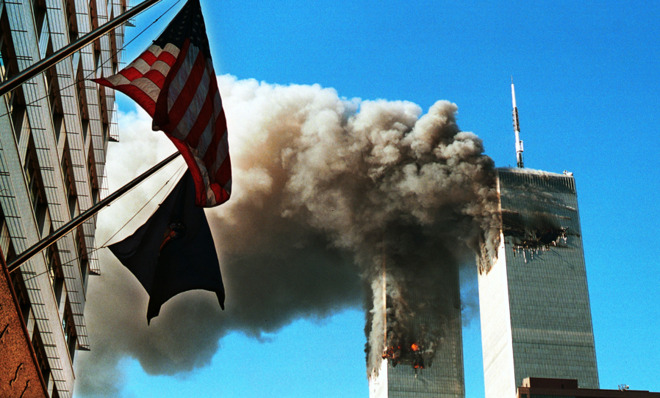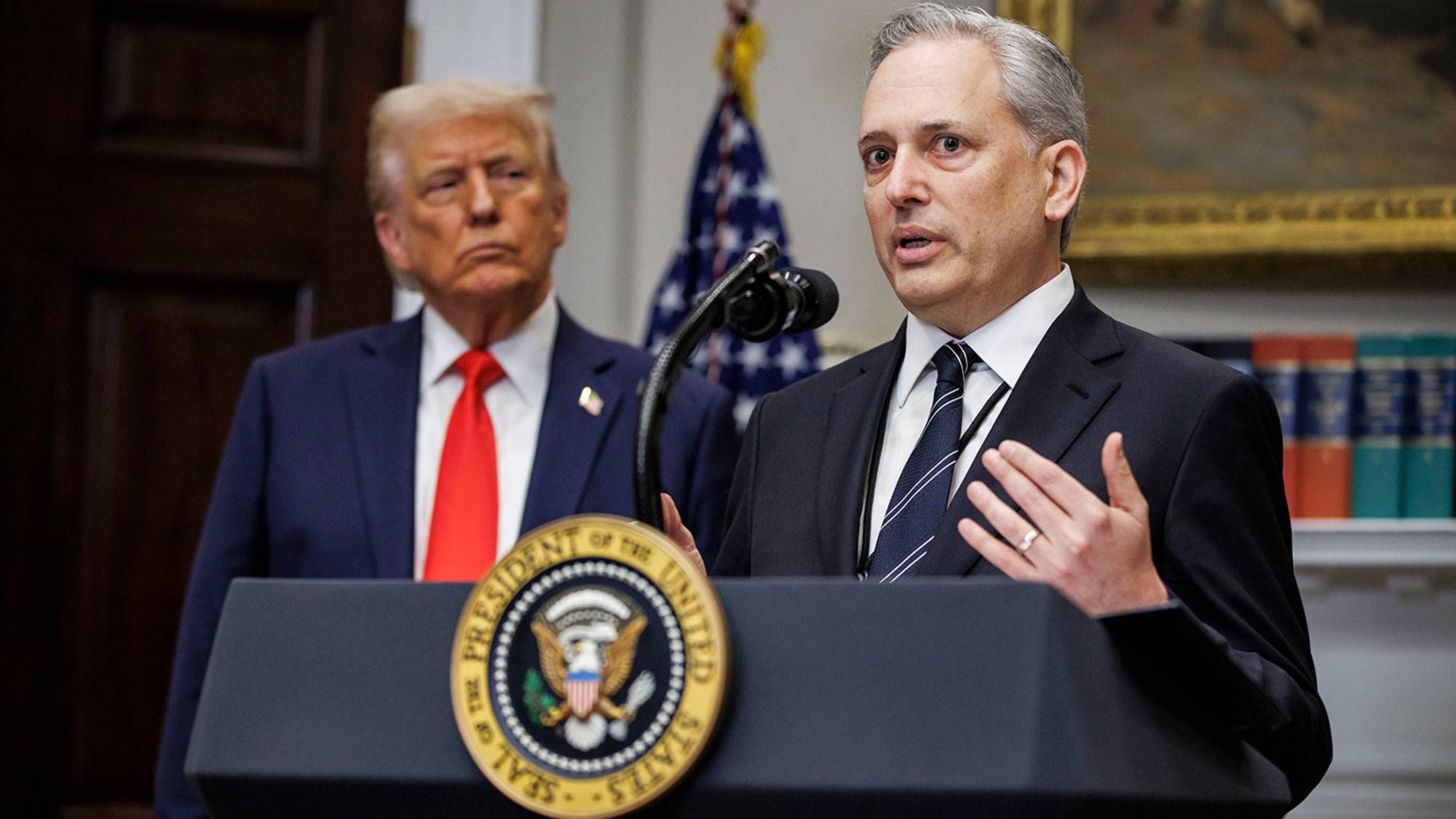Inside the Holy Grail of 9/11 documents


A few months ago, after nearly a decade of contentious litigation and with many conspiracy theories spawned, the Pentagon released the Holy Grail of Sept. 11th, 2001, documents: transcripts from the emergency conference calls initiated by the National Military Command Center.
For years, the government insisted that the entire conference was classified because the disclosure of any parts could be combined with existing public information to give adversaries a window into how the military responds during an acute crisis, as well as how the government's continuity of government programs work. The version eventually released does indeed contain numerous redactions. It also, as we shall see, leaves in several startling revelations. Quite fortunately for historians, the Pentagon's concerns were correct in a broad sense: there exists enough information already declassified and in the public domain to fill in virtually all of the redactions. What emerges is not flattering to the government and, 13 years later, not particularly sensitive.
A number of the official redactions involve communications between the Presidential Emergency Operations Center and the NMCC. Several excisions include verbatim transcripts of conversations between national-level principals like Vice President Dick Cheney and the Secretary of Defense Donald Rumsfeld. Several other excisions concern the PEOC's knowledge of the precise location of Air Force One and the standing up of military assets to protect it during the initial phases of the emergency. You can, right here, read about those redacted conversations thanks to the type-up notes of a commission staffer who was able to listen to the conference call.
The Week
Escape your echo chamber. Get the facts behind the news, plus analysis from multiple perspectives.

Sign up for The Week's Free Newsletters
From our morning news briefing to a weekly Good News Newsletter, get the best of The Week delivered directly to your inbox.
From our morning news briefing to a weekly Good News Newsletter, get the best of The Week delivered directly to your inbox.
A few specific points are worth mentioning:
Communication was extremely spotty:
DDO: This is the DDO, roger. We are attempting to get the FAA in the conference.
NORAD: Can you also forward that request to poll all airborne traffic to determine their status?
DDO: This is the DDO, roger. Understand. Is FEMA in the conference? This is the DDO. Is FEMA in the conference?
NMCC EA: DDO, FEMA has dropped. We'll bring it back up.
Initially, the Federal Aviation Administration's emergency nationwide ground stop prevented so-called emergency evacuation aircraft from operating. The FAA modified the order shortly thereafter to permit those flights to operate. The emergency evacuation aircraft category included the military assets stationed around the Capitol to provide airborne contingency evacuation of senior cabinet and congressional officials. So those flights could not take off immediately.
The acting director of operations at the NMCC classified the conference at the level of "TOP SECRET SIOP," which is confusing. I believe he meant to say "TOP SECRET SIOP-ESI," which was the caveat at the time for information dealing with the execution of emergency nuclear war orders. This is an important point. During the first hour after the attacks, the United States did not really know whether the hijackings were a prelude to an attack by nation states, an attack that might trigger the president's execution of war orders. At that level of classification, participants could discuss retaliatory attack options if they needed to. That classification level also applies to the measures taken to protect the nuclear command and control system and the national command authority's ability to use it.
A free daily email with the biggest news stories of the day – and the best features from TheWeek.com
The FAA joined the call late and was not able to keep up with the information collected by its own command center; the FAA's line to the NMCC, classified for calls up to the TOP SECRET SIOP-ESI level, was located some distance away from the "floor" where data was coming in. This helped contribute to confusion over who had tactical control of aircraft in the National Capital Region.
Why no Andrews fighters?
The representative from the PEOC inquires about a half dozen times about "Andrews assets" being used to form a combat air patrol over the Washington area within thirty minutes of the first strike. The Air Force, NMCC, and NORAD simply did not know how to order these assets into action.
DDO: This is the DDO. Stand by. Air Force can you provide an update on fighter cap for the D.C. area?
AIR FORCE: Stand by for Air Force. Conference, conference, this is Air Force. We don't have that information at this time. Can NORAD provide? How copy?
DDO: Say again the last request for NORAD to provide info.
AIR FORCE: Yes, sir. Can NORAD provide information on fighter coverage over the Washington area?
NORAD: This is NORAD. We have no further information at this point. Stand by we're scrambling out field. NORAD complete.
At several points, generals take over the conference and clarify what their entire commands are doing.
CONR: Gen. Arnold, CONR. This is Air Officer.I tried to get a good location, sir, on the shout line from your ADDO. We're receiving reports that the original report of an aircraft out of San Diego. Enroute to Denver area was false. Can we verify that with you, sir?
GEN. ARNOLD: Yeah, hang on a second. We understand that to be the case, that there was an intel support as opposed to a FAA request. So, we're not tracking them and the FAA is not tracking them. So, as far as we know it doesn't exist. But, we're still maintaining the track over the Colorado.
The NAOCs
There were three National Airborne Operation Center planes launched in response to the continuity of government program that morning. They identify on the net as "NAOC Primary," "NAOC Secondary," and "NAOC Tertiary." Had there been a nuclear attack, or had the Pentagon been wiped out, these planes would coordinate the disposition of the world's largest military, including its nuclear assets. But the NAOC planes had trouble communicating with the NMCC at times.
EA: Break, break, this is the EA. Stand by. We're going to verify that NAOC is still on.
DDO: Roger.
EA: Break, break, this is the EA. NAOC are you online? This is the Command Center. NAOC are you online?
DDO: NAOC this is the DDO.
EA: Break, break, this is the EA. We're still continuing to have problems with NAOC. Stand by while we try to add them back in the conference, sir.
The "mystery" plane
The NAOC Tertiary plane, with a call sign of Venus 77, took off from Andrews immediately after the attack — around 9:45 — and was trapped by the air space closure. It milled around Virginia for a while, and became quite noticeable when television cameras picked it up. In the early afternoon, it needed to land at Andrews, presumably because it was running out of fuel. (There was no tanker support in the Washington area; there was tanker support for the other two NAOCs, which were flying around the midwestern United States.) The NAOC Tertiary could not easily communicate with the Pentagon or with Andrews Air Force Base, where the Venus command post that monitors special assignment air missions at Andrews was located. Hence:
NAOC: DDO were you calling NAOC primary?
DDO: Roger. Actually, any NAOC element. We're trying to confirm the type of aircraft that ADDIS77 is.
That's A-D-D-I-S77 which is inbound to Andrews Air Force Base.
NAOC: That is a tertiary NAOC and they are trying to get into Andrews.
DDO: Roger. Understand it's an E4B?
So what was the NAOC E4B doing at Andrews that morning? We already know the answer: it was participating in a Strategic Command nuclear command and control exercise, one of many that STRATCOM held that year, the years before, and in the years since. Interestingly, because of the type of exercises scheduled for 9/11, the United States military probably had more emergency assets available — and still, communications in the real world failed the test of redundancy many times.
Marc Ambinder is TheWeek.com's editor-at-large. He is the author, with D.B. Grady, of The Command and Deep State: Inside the Government Secrecy Industry. Marc is also a contributing editor for The Atlantic and GQ. Formerly, he served as White House correspondent for National Journal, chief political consultant for CBS News, and politics editor at The Atlantic. Marc is a 2001 graduate of Harvard. He is married to Michael Park, a corporate strategy consultant, and lives in Los Angeles.
-
 Trump vs. states: Who gets to regulate AI?
Trump vs. states: Who gets to regulate AI?Feature Trump launched a task force to challenge state laws on artificial intelligence, but regulation of the technology is under unclear jurisdiction
-
 Decking the halls
Decking the hallsFeature Americans’ love of holiday decorations has turned Christmas from a humble affair to a sparkly spectacle.
-
 Whiskey tariffs cause major problems for American distillers
Whiskey tariffs cause major problems for American distillersIn the Spotlight Jim Beam is the latest brand to feel the pain
